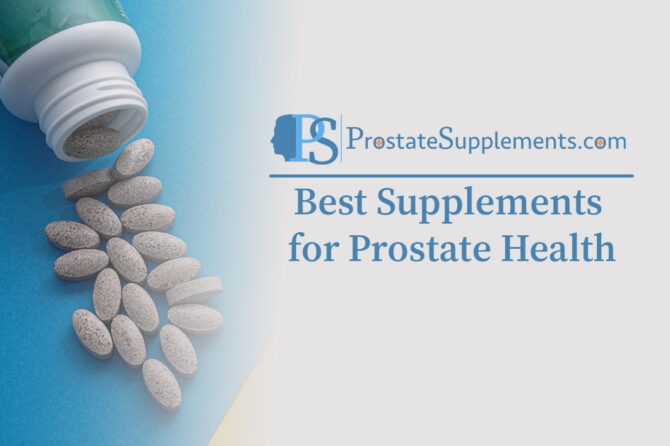
Ornithine and Prostate Health: What the Evidence Actually Shows
L-ornithine is a non-proteinogenic amino acid central to the urea cycle, the liver’s pathway for detoxifying ammonia by converting it to urea for urinary excretion. In clinical settings, ornithine is often administered as L-ornithine-L-aspartate (LOLA) to lower ammonia in patients with hepatic encephalopathy. Outside liver disease, ornithine appears in sports and “anti-fatigue” supplements. Its direct role in prostate or lower urinary tract health, however, is far less clear than its role in ammonia handling.
Biochemistry in Brief: Why Ornithine Matters
- Urea cycle node. Ornithine accepts carbamoyl phosphate (via ornithine transcarbamylase) to form citrulline—one of the first committed steps in ureagenesis. Efficient ureagenesis prevents neurotoxic hyperammonemia; urea is then excreted in urine.
- Gateway to polyamines. Through ornithine decarboxylase (ODC), ornithine is decarboxylated to putrescine, then elongated to spermidine and spermine. These polyamines support cell growth and are abundant in the prostate. Dysregulated polyamine metabolism is a hallmark of prostate carcinogenesis.
Ornithine and the Prostate: What We Know
1) Polyamine Biology in the Prostate
The prostate maintains some of the highest tissue concentrations of polyamines in the body. Studies show ODC overexpression and elevated polyamine flux in prostate cancer models and patient tissues. Because ODC uses ornithineas its substrate, this pathway links ornithine metabolism to prostate biology. This is a mechanistic connection, not evidence that supplementing ornithine is beneficial.
2) Targeting ODC (The Opposite of Supplementing Ornithine)
Clinical research has focused on inhibiting ODC with α-difluoromethylornithine (DFMO; eflornithine) to lower prostatic polyamines. In randomized trials, DFMO reduced prostatic putrescine and slowed prostate growth, showing potential as a chemopreventive strategy.
This suggests that increasing ornithine levels could theoretically feed into the very pathway researchers aim to suppress. While this does not prove harm from dietary ornithine, it highlights why supplementing ornithine for prostate health is not supported by evidence.
3) Bottom Line for Prostate Outcomes
- No human trials demonstrate that ornithine supplementation improves benign prostatic hyperplasia (BPH) symptoms, prostatitis, or prostate cancer risk.
- Active research explores polyamine pathway inhibition, not ornithine loading, to influence prostate biology.
- Until reliable data exist, there is no evidence-based reason to take ornithine for prostate health.
Urinary and Lower Urinary Tract Considerations
Indirect Physiological Connection
By supporting the urea cycle, ornithine helps the body convert ammonia to urea, which is then excreted in urine. This provides an indirect urinary benefit through systemic detoxification but does not directly improve lower urinary tract symptoms (LUTS) such as frequency, urgency, or urinary flow.
Hepatic Encephalopathy Evidence
In liver disease, LOLA lowers ammonia and improves mental status in overt and minimal hepatic encephalopathy when given orally or intravenously. These results confirm ornithine’s role in ammonia handling, but they do not translate to urinary tract health in the general population.
Men’s Health Context
- Fatigue and recovery. Some small studies in sports and exercise settings suggest ornithine may reduce perceived fatigue, likely through improved ammonia clearance during physical exertion. These studies are preliminary and not prostate-specific.
- Oncology caution. Since the polyamine pathway is linked to prostate cancer development, men with a history of prostate cancer or elevated risk should avoid high-dose, chronic ornithine supplementation unless advised by a healthcare professional.
Ingestion Forms, Dosing, and Usage
Forms
- L-ornithine (free base): Commonly available as capsules or powders.
- L-ornithine-L-aspartate (LOLA): Used clinically for hyperammonemia and hepatic encephalopathy.
Dosing
- Medical use (HE): Oral or IV LOLA in the range of 9–18 g/day, divided into multiple doses, under strict medical supervision.
- General supplementation: Commercial products typically provide 500–3,000 mg/day. There is no established prostate-specific dose.
Timing and Combinations
- Usually taken between meals to reduce competition with other amino acids for absorption.
- Should not be combined with other substances that increase polyamine production if there are concerns about prostate health or cancer risk.
Safety, Contraindications, and Interactions
- Tolerability: Generally safe at supplemental doses. The most common side effects are mild gastrointestinal issues such as nausea or diarrhea.
- Liver disease: Medical supervision is essential when using LOLA for treating hepatic encephalopathy.
- Prostate cancer: Given the role of polyamines in prostate tumor growth, men with prostate cancer or at high risk should avoid unsupervised use of ornithine supplements.
- Pregnancy and children: Limited safety data—use only under professional guidance.
- Drug interactions: Minimal known interactions, but those with liver disease should ensure coordination with other treatments like lactulose or rifaximin.
Practical Guidance
- No clinical proof exists that ornithine improves BPH, prostatitis, or urinary symptoms in men.
- Healthy men may try low doses (500–1,000 mg/day) for general recovery, but benefits are modest and unrelated to prostate health.
- Men with prostate cancer or elevated risk should avoid chronic, high-dose use without medical advice.
- Hepatic encephalopathy treatment with LOLA must always be clinician-directed.
Frequently Asked Questions
Does ornithine increase PSA or promote prostate cancer?
There is no direct evidence that ornithine supplementation raises PSA levels or directly worsens prostate cancer. However, because it fuels the polyamine pathway, which is overactive in prostate cancer, caution is warranted.
Can ornithine improve urinary frequency or nocturia?
There is no scientific proof that it improves lower urinary tract symptoms such as nocturia. Its urinary role is purely indirect via urea production.
What’s the safest way to use ornithine?
If you choose to try it, begin with a low dose (500–1,000 mg/day), monitor for side effects, and stop use if unusual symptoms appear. Men with prostate cancer or high risk should consult a physician first.
Conclusion
L-ornithine is an essential amino acid derivative critical for ammonia detoxification and clinically useful in liver-related conditions such as hepatic encephalopathy.
However, there is no reliable evidence to support its use for improving prostate health, BPH, or urinary tract symptoms.
Current prostate-related research focuses on blocking ornithine’s downstream pathways, not increasing its availability. Until future studies clarify its effects, ornithine should not be used as a supplement specifically for prostate health.


Leave a reply